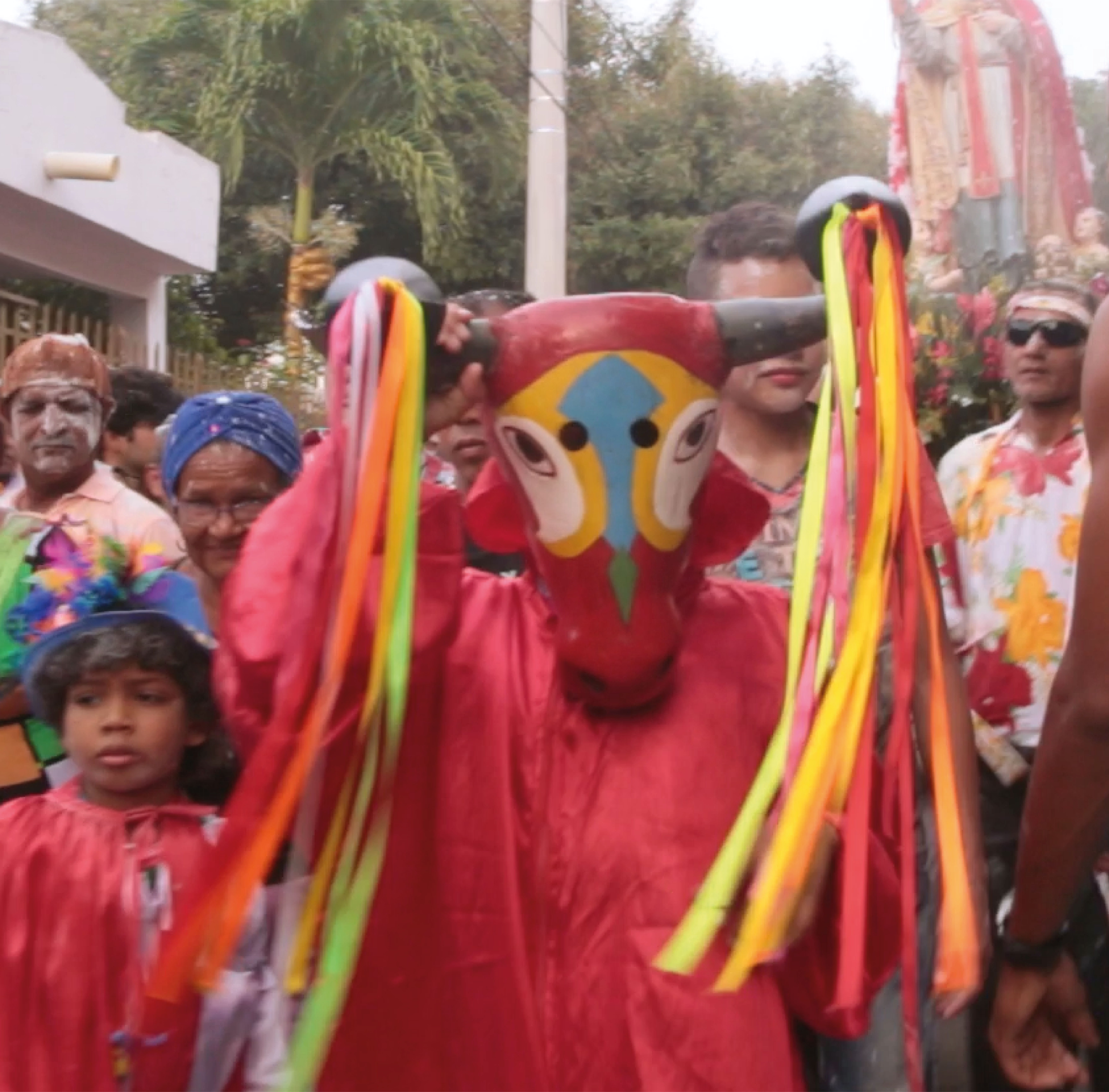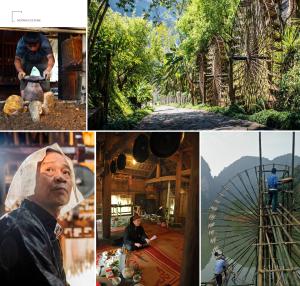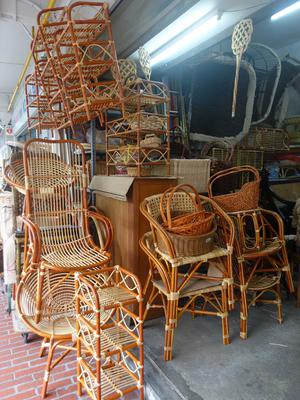Históricamente, los primeros carnavales en el Caribe se remontan al siglo XVI en la zona de Mamatoco, Santa Marta, donde convergieron colonizadores, indígenas y más tarde poblaciones afrodescendientes. Esta mezcla cultural tomó forma bajo la influencia de la Iglesia Católica, evidenciada por la construcción de la primera iglesia de Hispanoamérica en Mamatoco. Sin embargo, con el tiempo, esto llevó gradualmente a que la expresión carnavalesca se ocultara dentro del ritual religioso. Mamatoco es quizás el único lugar en el mundo donde se celebran vibrantes precarnavales, aunque paradójicamente su carnaval permanece oculto, representando el origen de los carnavales caribeños en Colombia y la identidad de las mujeres y hombres caribeños.
Este fenómeno agrega una capa adicional de complejidad y autenticidad a las celebraciones populares y comunitarias en toda la cuenca del Caribe, enfatizando la riqueza cultural y la singularidad de las expresiones carnavalescas hispanoamericanas, que tienen una amplia relación con la influencia europea. Es un elemento sugerente que merece ser explorado y puesto en valor, contribuyendo así a una comprensión más profunda y a la integración cultural y patrimonial de Iberoamérica.
John Jairo Sánchez Peña
Investigador - Cineasta - Comunicador
04-30-2024
| Institutional and human capacities | Mamatoco has never ceased to be a town, although today it is a neighborhood in the district of Santa Marta, it keeps its carnival tradition alive and active. Its community capacity is woven from close social and cultural bonds that have extended the practice of its pre-carnivals and religious festival. Mothers, fathers, grandparents, children, friends are also cultural managers and artists who have sustained the legacy of the original carnival in which thousands of visitors have participated year after year. Carnival participants come from all social spheres of Mamatoco and Santa Marta, making this carnival a resistance to oblivion. Due to the lack of institutional support, this heritage has not been revitalized. Making visible, promoting, and strengthening the carnival practice in Mamatoco is essential for the recognition of other local communities in the Colombian Caribbean region and the Hispanic American Caribbean basin. It is an opportunity that contributes to the re-signification and appropriation of the festival, carnival, and territory, as local expressions, laden with voices, gestures, and traces, symbolize the uniqueness of the Caribbean carnival through multiple manifestations and the raison d'être of Caribbean women and men. This socio-cultural fabric is at risk, as well as the access to cultural rights of communities to represent and express the singularity of their festivals in their territories. Helping to reconstruct the sense of cultural well-being, carnival practice, and appropriation of their intangible cultural heritage is urgent according to the recommendations established by UNESCO. | |
| Transmission and education | The festive and carnival tradition has been passed down from generation to generation through oral tradition, rooted sense, and commitment to the tradition of their community. The strong attachment of its population to the territory traces the Ibero-American cultural relationship. Since they were an indigenous settlement and later a reservation under Spanish conquest, the importance of this cultural territory has been manifested in the festival, giving rise to the carnival. These social fabrics are very strong. From schools and some community organizations, the carnival has been approached as a socio-cultural practice of importance for the development of community and universal human values. However, there is a distortion of what a carnival is as a culture, as event companies and fashion have influenced a consumerist view of the popular carnival. Mamatoco is characterized by its inhabitants being very good hosts; they are calm people and very affectionate with visitors and foreigners. Currently, we have started to create research texts, projects, and academic participations of popular knowledge, seeking to strengthen the understanding of this carnival as a method of appropriation of intangible heritage. In addition to fostering spaces for community organization, dialogues, and actions that have been taking place in academic spaces, public squares, and networks where there was previously no recognition of this as cultural value. | |
| Inventorying and research | The first carnivals of the Colombian Caribbean date back to Mamatoco, where colonizers, Blacks, and indigenous people converged in the 16th century, originating the carnival tradition. This cultural legacy, for over 300 years, began with dances of devils and 'cucambas.' Today, carnival activities are part of the festive calendar of carnivals. Several Saturdays before the carnival, pre-carnivals are celebrated with great fervor, where the essence of the town spills into the streets, where there is no charge, but visitors are invited to join in the carnival festivities. Currently, Santa Marta has a preliminary inventory of the city's cultural heritage. In this inventory, the festival of Santa San Agatón is listed as a heritage festival, although the city hall and the secretariat mention the Mamatoco carnivals year after year as part of the cultural agenda. The carnival in Santa Marta continues to be invisibilized because in towns like Bonda, Gaira, Masinga, Taganga, and Pescaito, carnival celebrations take place. These towns were also indigenous settlements. Therefore, the carnival is popular and surrounded the city. During the conquest era, the rich held parties in large private halls, which reduced the cultural importance of popular festivities in Santa Marta, where the Caribbean carnivals were born and where the first church in South America was built. Its current expression has been weakened and marginalized due to the limited interest of cultural institutions, the lack of socio-economic opportunities from the private sector, and the absence of academic studies on the sociological, cultural, and heritage phenomenon. With the idea of attracting audiences, local collectives are forced to submit to commercial logic imposed by beverage and liquor companies through commercial stages and shows, so the carnival as a culture is managed with limited and precarious financing strategies. This has led to the marginalization and reduction of cultural expression to a commodity, a phenomenon even perceived in Barranquilla today. | |
| Policies as well as legal and administrative measures | The safeguarding of heritage is in the process of being classified as an original Carnival festivity in the city. In Mamatoco, the greatest tradition in terms of festivities revolves around San Agatón, not only due to the religious devotion of the residents towards the Saint but also because of the expansion that the celebration has undergone. It becomes evident that each year more parishioners join this celebration. This religious festival is recognized as part of the intangible cultural heritage of the city of Santa Marta; however, within it lies a true carnival. The pre-carnivals, accompanied by parades, costumes, Caribbean music, and traditional carnival acts, are established in the community of Mamatoco as a living and age-old expression that has been kept alive. For as long as memory serves, it has been commemorated in Mamatoco every Carnival Saturday. It can be said that the festivities of San Agatón begin to be celebrated with the introduction of this saint in the town of Mamatoco. The historical date of this, though not precise, is related to the appearance of the religious order of the Franciscans and their work of indoctrination among indigenous peoples like Mamatoco. | |
| Role of intangible cultural heritage and its safeguarding in society | Making visible, promoting, and strengthening the carnival practice in the local communities of the Colombian Caribbean region is an opportunity that contributes to the re-signification and appropriation of the festival, carnival, and territory as intangible heritage of the people. It promotes socio-cultural meeting spaces for dialogue, unity, and collective creation among diverse population groups, strengthens community and human values as fundamental parts of peaceful coexistence, cultural exchange, and regional and Ibero-American integration. Research, creation, and cultural management initiatives have fostered active participation of the local community in knowledge-building spaces and the re-signification of their own festival, carnival, and popular knowledge, fostering a change in mentality, as cultural actors are marginalized and the activities of artists are not dignified. Santa Marta, the oldest city in Colombia, with its cultural, touristic, and biological greatness, has been politically and economically weakened and forgotten. Additionally, the war and the presence of armed groups that prohibited cultural activities silenced expressions and cultural rights. The patrimonialization of the Barranquilla carnival has concentrated all the country's economic interest in that city, neglecting the richness of the festival experienced in much of the Colombian Caribbean communities, where the main influences and contributions to the Barranquilla carnival originated. This safeguard ensures the creation of inclusive policies and action plans for the revitalization of the popular carnival festival in Santa Marta, restoring the city's symbolic stage as the epicenter of carnival birth. The dignification, organization, and participation of artists and cultural actors are another benefit. This heritage has the capacity to activate the city's cultural tourism ecosystem, as well as access to cultural rights for the population unaware of the value of their city's culture. Safeguarding this practice allows space for youth participation, as the city lacks effective spaces for healthy and cultural leisure activities. | |
| Awareness raising | Highlighting the expression of values and cultural contributions of the communities involved in the carnival celebration is crucial. The community faces the risk of losing traditional values such as hospitality, tolerance, creativity, collaboration, trust, and respect, along with dialogue and community unity, intergenerational coexistence, relationships with other peoples, inclusivity, human rights, and the free expression of their customs. This risk is exacerbated by the intervention of external actors not committed to cultural development and community life, such as event promoters, beverage and liquor companies, show sponsors, and the importation of music and television styles and trends, imposing mercantile logics on the carnival. | |
| Engagement of communities, groups and individuals as well as other stakeholders | Engaging diverse social and economic sectors in the area: high school graduates, university students, entrepreneurs, LGBTQ+ communities, housewives, working women, unemployed individuals, teachers, organizers, senior citizens, children participating in carnival activities, employed and unemployed adults, researchers, creators, innovators, and academics; promoting gender equality (SDG 5). Strengthening the connection between local culture and tourist attractions, benefiting the city, its cultural institutions, and individuals involved in cultural tourism according to the master plan "500 Years of Santa Marta," promoting activities that highlight the cultural expressions unique to the people of Santa Marta. | |
| International engagement | A strategy is being planned with local institutions that are part of the value chain for the cultural and touristic development of Santa Marta and the Caribbean. At the international level, there will be active participation in IBERCULTURA cooperation initiatives, such as the call for support for networks in 2024. Also, the IberCultura Viva Call for Support for Networks and Collaborative Work Projects 2023. The Knowledge and Best Practices Bank of the Ibero-American Cultural Space is a virtual platform that brings together projects developed by museological institutions. | |
| References | https://www.santamarta.gov.co/sites/default/files/libro_patrimonio_.pdf INVENTORY Work Team PRELIMINARY CULTURAL HERITAGE OF THE DISTRICT OF SANTA MARTA" | |






.jpg)















_(31711258567).jpg)






























































